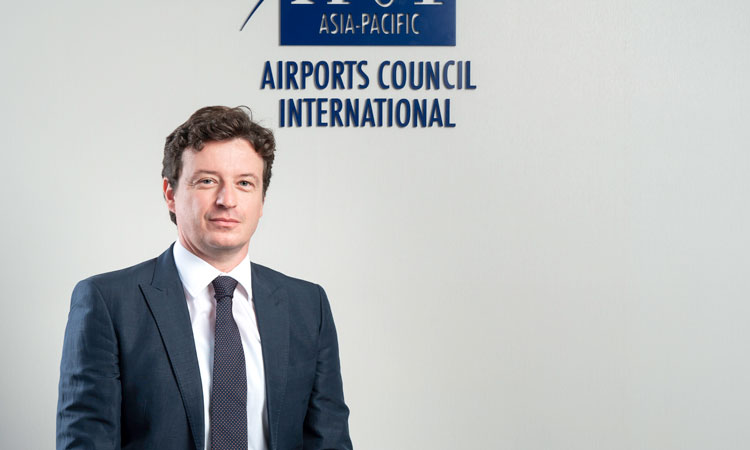We remain resolute to support our member airports
- Like
- Digg
- Del
- Tumblr
- VKontakte
- Buffer
- Love This
- Odnoklassniki
- Meneame
- Blogger
- Amazon
- Yahoo Mail
- Gmail
- AOL
- Newsvine
- HackerNews
- Evernote
- MySpace
- Mail.ru
- Viadeo
- Line
- Comments
- Yummly
- SMS
- Viber
- Telegram
- Subscribe
- Skype
- Facebook Messenger
- Kakao
- LiveJournal
- Yammer
- Edgar
- Fintel
- Mix
- Instapaper
- Copy Link
Posted: 14 October 2020 | Stefano Baronci | No comments yet
ACI Asia-Pacific’s Director General, Stefano Baronci, explains how the association is dedicated to continuing to support airports and the aviation industry through the ongoing COVID-19 crisis.


COVID-19 has thrown the transport industry into the deepest crisis it has ever experienced. Widely regarded as unstoppable engines of growth, particularly for developing nations in the Asia-Pacific region, the industry is now fighting to restore connectivity and passenger confidence.
Our pre-COVID-19 estimates showed that the Asia-Pacific share of global passenger traffic would grow to 44 per cent by 2040, compared to 37 per cent in 2018. Eight out of the 10 fastest growing countries for passenger traffic are in the Asia-Pacific and Middle Eastern regions – all are emerging and developing economies. It is important to note, despite the significant investments made over the past years, many countries in this region continue to be in catch-up mode. India, for example, still lags behind other economies in terms of trips per capita, with Indians taking six trips per 100 people, compared to 200 trips in the U.S. per 100 people. Now, the latest forecast figures show that Asia-Pacific and Middle Eastern airports will lose 55 per cent and 60 per cent in passenger volume, respectively, by the end of the 2020.
There is no doubt in my mind that air travel will come back. Differently, for sure, but people have an innate desire for travel. Airports are vital cogs in the aviation ecosystem and important engines of growth, wealth creation and employment. Getting air travel back on track is essential to drive global economic recovery.
From an association’s perspective, we remain resolute to support our member airports through advocacy and with programmes, like Check & Fly and the Airport Health Accreditation, to demonstrate to passengers, regulators and governments that the airport industry is prioritising health and safety in a measurable, established manner.
As a highly-regulated industry, states have imposed a number of measures on airports that are proving to be detrimental to the restart.
In parts of Asia-Pacific, domestic travel is picking up. However, unlike other parts of the world, many nations in the Asia-Pacific region have yet to lift international travel bans, which airports count on for much of their revenue.
Notwithstanding epidemiological and public health concerns, it would be more appropriate to open the skies by applying risk-based measures rather than throwing parts of the industry expensive lifelines. Just like states are carefully calculating the risk of reopening schools in the name of the right to education, they should similarly allow people and goods to freely move beyond their borders.
This leads me to make a strong call for relaxing quarantine measures. ACI and IATA recently called upon ICAO states to follow a robust and consistent protocol for testing – preferably before flight departure or at least upon arrival – implemented as an alternative to unfocused, blanket requirements for quarantine. These recommendations should be risk-based and informed by scientific and health experts. These measures should only be applied to passengers between countries where the virus is being contained, and for as long as is necessary to ensure public health and passenger confidence.
Passengers and airport employees, rightly so, are concerned about their health. The speed at which airports in the region deployed a myriad of health and hygiene measures, utilising state-of-the-art technology, speaks to the commitment of airports. From an association’s perspective, we remain resolute to support our member airports through advocacy and with programmes, like Check & Fly and the Airport Health Accreditation, to demonstrate to passengers, regulators and governments that the airport industry is prioritising health and safety in a measurable, established manner.
Issue
Related topics
Related organisations
Airports Council International Asia-Pacific and Middle East (ACI APAC & ME)














